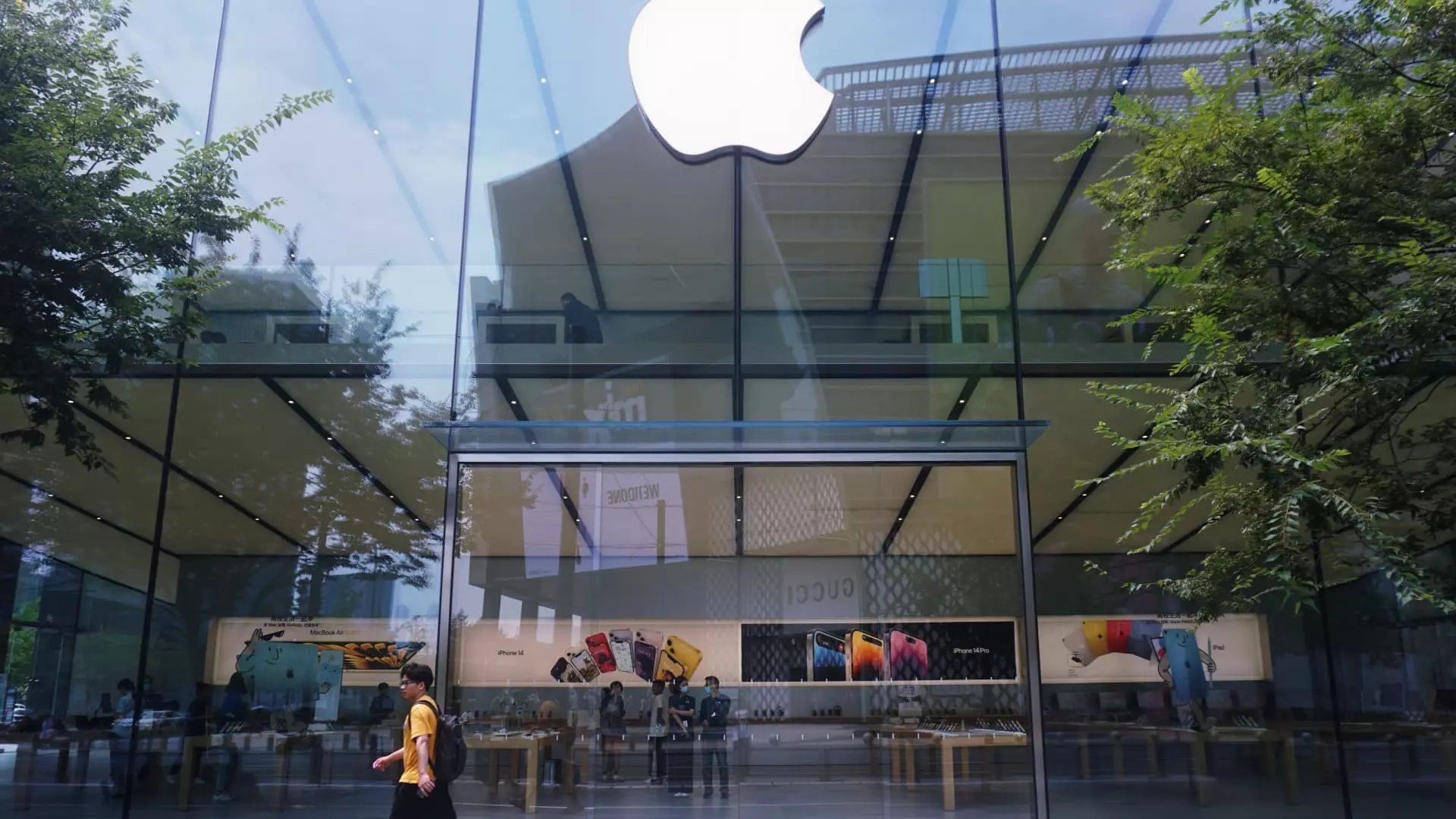The ongoing race for technological dominance in the smartphone industry has entered a new chapter, characterized by silent but profound shifts. While consumers and commentators obsess over Apple’s anticipated foldable iPhone—an innovation still shrouded in uncertainty—the real story unfolds behind the scenes. Chinese display and glass manufacturers, exemplified by Lens Technology, are positioning themselves as silent architects of this revolution. Their strategic expansion and capital-raising efforts signal a calculated effort to redefine supply chains, challenge American dominance, and shape a market that’s increasingly interconnected and geopolitically charged.
This drive reveals a broader trend of Chinese technological entities leveraging financial markets to escalate their global influence. The recent Hong Kong IPO, which raised nearly $611 million, is more than just a corporate milestone. It symbolizes China’s intent to accelerate its push into the high-end display industry, aiming for dominance in foldable and flexible screens—areas crucial for future smartphone designs. With significant backing from international hedge funds like Steve Cohen’s and endorsements from prominent analysts, Lens Technology is establishing itself as a formidable player. Its ambitions go beyond manufacturing; they embody an altering power dynamic where Chinese firms seek to not merely participate in global markets but to lead them.
Strategic Divergence: Beyond Apple’s Shadow
While tech enthusiasts await Apple’s inevitable plunge into foldable phones, it’s critical to ask: who will truly benefit from this shift? Chinese manufacturers, especially those specializing in ultra-thin glass and advanced display technology, are subtly positioning themselves as the backbone of these forthcoming innovations. Unlike Apple’s transparent silence concerning specific suppliers, Lens Tech’s disclosures about diversifying its customer base indicate a broader strategy of reducing reliance on any single American or Western client. This move isn’t just corporate prudence; it’s a calculated pivot towards a more resilient, self-reliant industry ecosystem.
Moreover, the increase in production capacity in China, coupled with overseas factories in Vietnam and Mexico, underscores a broader geopolitical strategy. Beijing’s push to expand manufacturing beyond traditional borders isn’t solely about reducing costs; it’s about cultivating genuine influence over the entire supply chain for next-generation mobile technology. The implications extend into international trade disputes, tariffs, and even the future of tech sovereignty. Chinese companies aren’t merely reacting to existing demand—they are orchestrating a future where their infrastructure and innovations lead the way, minimizing US-American tech sovereignty over critical components.
The Geopolitical Chessboard: Investment and Influence
The infusion of international capital into Lens Technology highlights a shift in the geopolitical landscape. Western investors, traditionally wary of Chinese tech firms, are now warming up to the prospect of strategic stakes—particularly when backed by positive analyst reviews promising robust growth. Steve Cohen’s sizable investment, amassing an 8.41% stake, signals a growing appetite among Western hedge funds to capitalize on Chinese tech firms’ ascent. This isn’t merely financial speculation; it’s a recognition of China’s rising influence in critical supply sectors like sophisticated glass and display components.
Such investments also serve as a means of soft power, subtly integrating Chinese firms into global financial ecosystems. This process enhances their legitimacy and access to international markets, broadening their scope and competitive edge. Furthermore, with Chinese firms aiming to seize a larger share of the burgeoning foldable smartphone market, allied financial backing becomes imperative. These companies are racing to ensure they are ahead of the curve, aware that the next decade may see a political and economic collision course that shapes how and where innovation occurs.
Balancing Innovation and Geopolitical Risk
However, this rapid expansion isn’t free from risks. The recent share price declines following tariff impositions reveal underlying vulnerabilities. While Chinese firms appear optimistic about capturing market share in China and Southeast Asia, the geopolitical landscape remains unpredictable. The U.S. and allied nations are increasingly wary of Chinese technological ascendancy, with potential restrictions looming in areas like exports and international collaborations.
Nevertheless, Lens Tech’s strategic focus on diversifying its customer base to include smart vehicle companies and Chinese startups reflects an acumen that balances ambition with caution. It recognizes limitations posed by U.S. trade policies yet remains optimistic about growth prospects, especially for ancillary applications like smartphone cover glass and smart eyewear. These diversified avenues serve as a hedge against potential political disruptions while positioning Chinese firms as versatile and resilient players—inspiring confidence among investors and industry insiders who understand that innovation often thrives amidst geopolitical tensions.
The real story isn’t just about a single Chinese company’s IPO or its potential role in future Apple devices. It’s about a broader, more strategic transformation of the global technological order. Chinese firms like Lens Technology are pushing beyond traditional manufacturing roles to become central players in the future of mobile and wearable technology. Their increasing financial strength, coupled with strategic diversification, signals a shift in global power—one where innovation isn’t solely driven by Western giants but increasingly by a multipolar constellation of players.
This evolving landscape demands a nuanced understanding. While Western economies might see Chinese firms as threats, they are also opportunities—partners in a complex web of innovation and market influence. Yet, the dominant narrative should acknowledge that the next wave of technological leadership may be quietly unfolding in these Chinese factories, driven by strategic capital infusion and geopolitical calculation. Whether this heralds a new era of collaboration or conflict remains to be seen, but one thing is clear: the center of innovation’s gravity is shifting, and the ramifications will extend well beyond the world of consumer gadgets.

